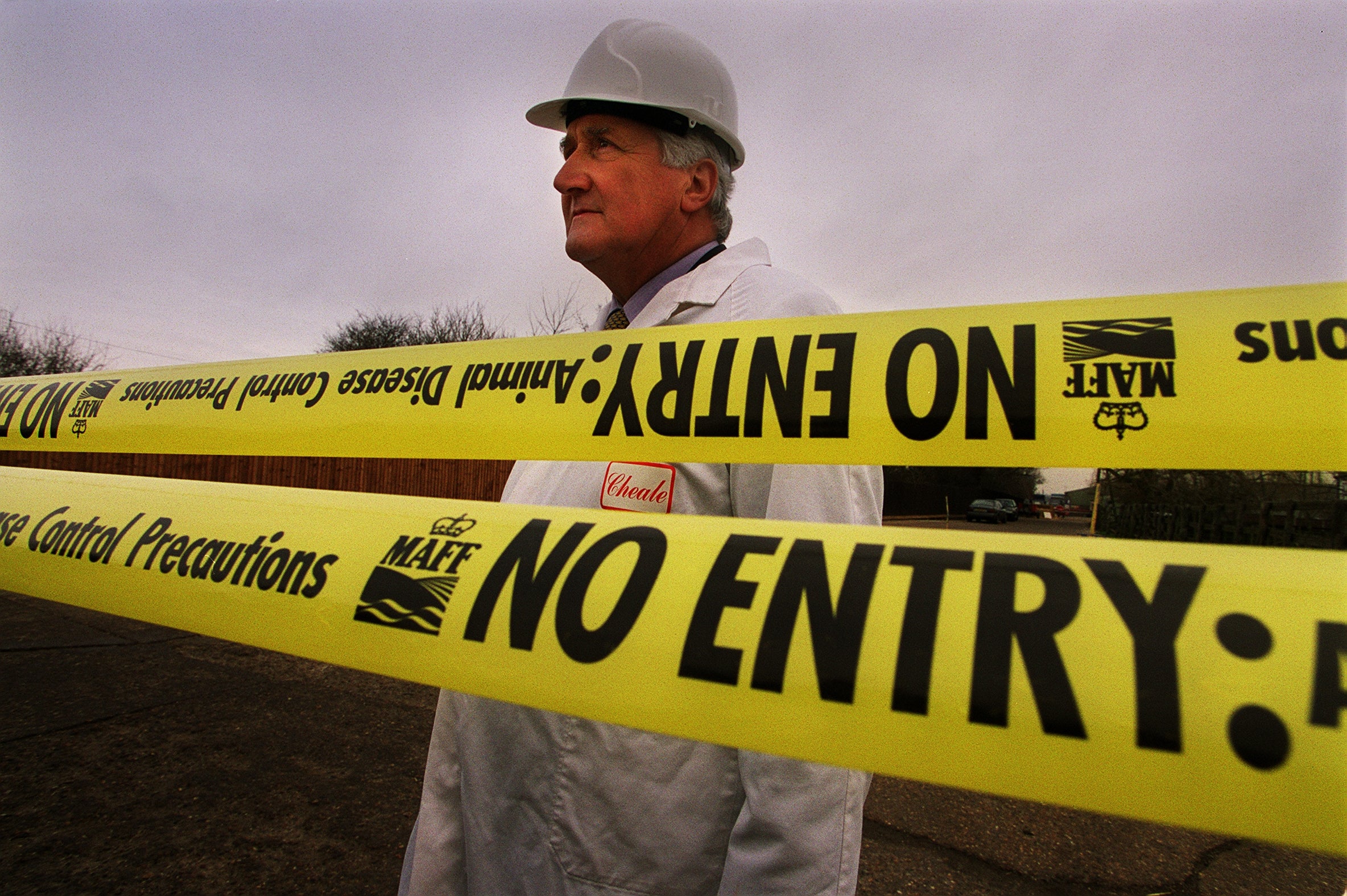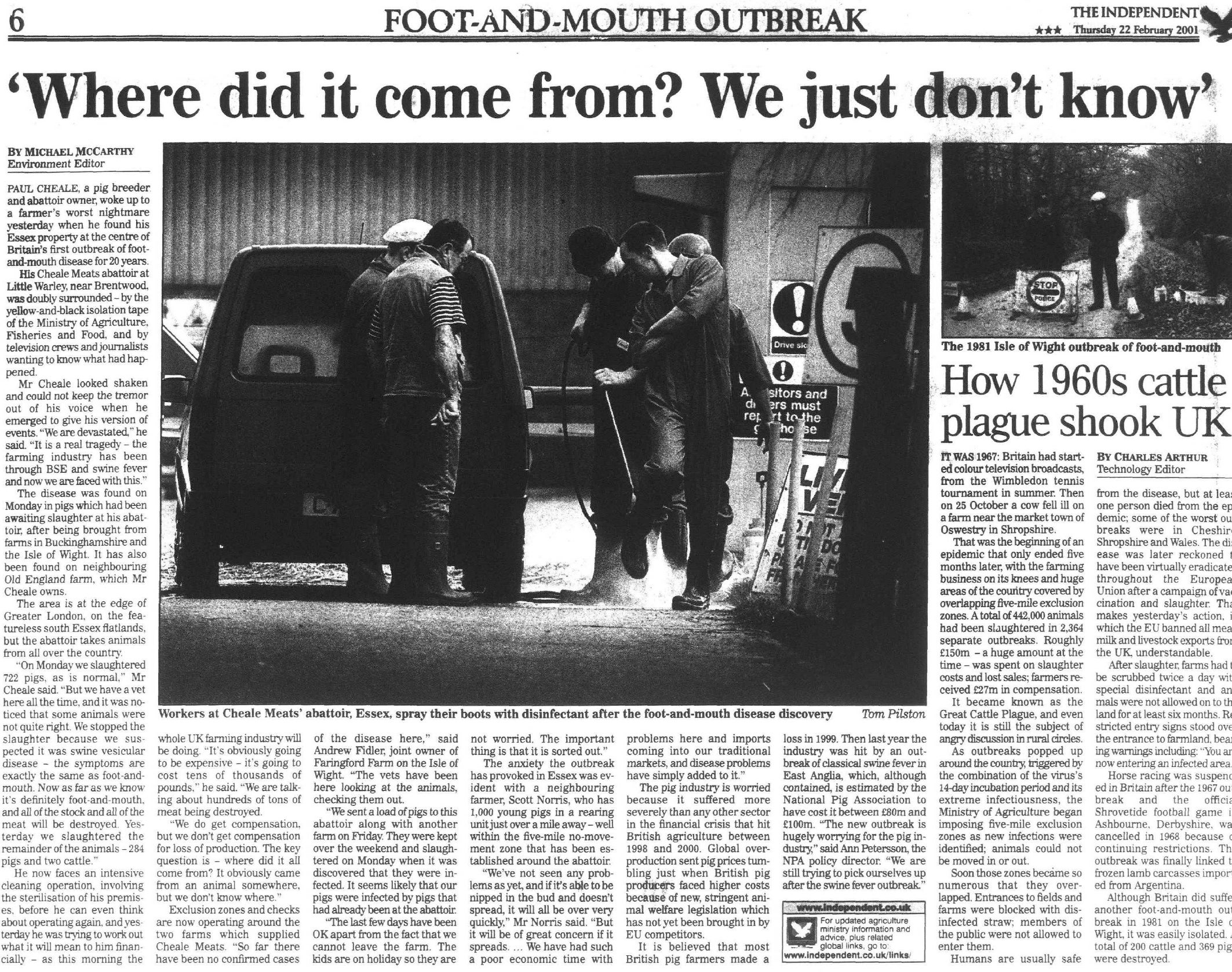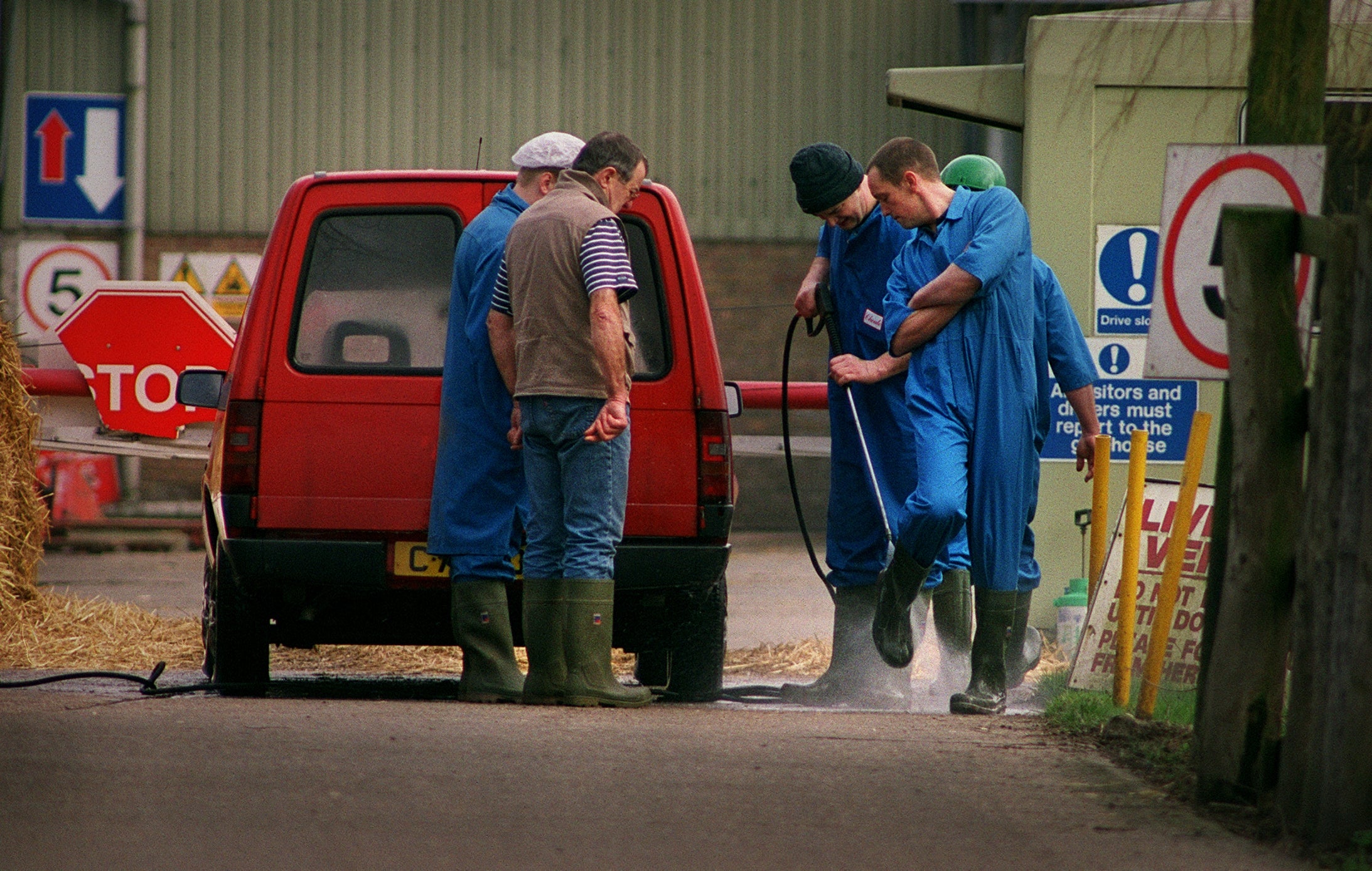Where did foot-and-mouth disease come from?
In 2001, environment editor Michael McCarthy met Paul Cheale, who was facing an expensive cleaning bill after his Essex abattoir became the centre of the outbreak

Paul Cheale, a pig breeder and abattoir owner, woke up to a farmer’s worst nightmare yesterday when he found his Essex property at the centre of Britain’s first outbreak of foot-and-mouth disease for 20 years.
His Cheale Meats Abattoir at Little Warley, near Brentwood, was doubly surrounded – by the yellow-and-black isolation tape of the Ministry of Agriculture, Fisheries and Food, and by TV crews and journalists wanting to know what had happened.
Mr Cheale looked shaken and could not keep the tremor out of his voice when he emerged to give his version of events. “We are devastated,” he said. “It is a real tragedy – the farming industry has been through BSE and swine fever and now we are faced with this.”
The disease was found on Monday in pigs which had been awaiting slaughter at his abattoir, after being brought from farms in Buckinghamshire and the Isle of Wight. It has also been found on neighbouring Old England farm, which Mr Cheale owns.
The area is at the edge of Greater London, on the featureless south Essex flatlands, but the abattoir takes animals from all over the country.
“On Monday we slaughtered 722 pigs, as is normal,” Mr Cheale said. “But we have a vet here all the time, and it was noticed that some animals were not quite right. We stopped the slaughter because we suspected it was swine vesicular disease – the symptoms are exactly the same as foot-and-mouth.
“Now as far as we know it’s definitely foot-and-mouth, and all of the stock and all of the meat will be destroyed. Yesterday we slaughtered the remainder of the animals – 284 pigs and two cattle.”
The stench of infected farms was only the beginning ... read part three
He now faces an intensive cleaning operation, involving the sterilisation of his premises, before he can even think about operating again, and yesterday he was trying to work out what it will mean to him financially – as this morning the whole UK farming industry will be doing.
“It’s obviously going to be expensive – it’s going to cost tens of thousands of pounds,” he said. “We are talking about hundreds of tons of meat being destroyed.

“We do get compensation, but we don’t get compensation for loss of production. The key question is – where did it all come from? It obviously came from an animal somewhere, but we don’t know where.”
Exclusion zones and checks are now operating around the two farms which supplied Cheale Meats. “So far there have been no confirmed cases of the disease here,” said Andrew Fidler, joint owner of Faringford Farm on the Isle of Wight. “The vets have been here looking at the animals, checking them out.
“We sent a load of pigs to this abattoir along with another farm on Friday. They were kept over the weekend and slaughtered on Monday when it was discovered that they were infected. It seems likely that our pigs were infected by pigs that had already been at the abattoir.

“The last few days have been OK apart from the fact that we cannot leave the farm. The kids are on holiday so they are not worried. The important thing is that it is sorted out.”
What is swine fever?
Classical swine fever (CSF), or hog cholera, is a highly contagious disease of swine
Symptoms include fever, skin lesions, convulsions and usually death within 15 days
The incubation period ranges from two to 14 days
Immunisation: a small fraction of the infected pigs may survive and are rendered immune
The disease is endemic in much of Asia, Central and South America, and parts of Europe and Africa
It was believed to have been eradicated in the UK by 1966, but returned again in 2000
It is caused by a virus of the genus Pestivirus, which is closely related to the virus that causes bovine viral diarrhoea
Eradicating CSF is problematic: current programmes focus on rapid detection, diagnosis and slaughter, possibly followed by emergency vaccination
The anxiety the outbreak has provoked in Essex was evident with a neighbouring farmer, Scott Norris, who has 1,000 young pigs in a rearing unit just over a mile away – well within the five-mile no movement zone that has been established around the abattoir.
“We’ve not seen any problems as yet, and if it’s able to be nipped in the bud and doesn’t spread, it will all be over very quickly,” Mr Norris said. “But it will be of great concern if it spreads … We have had such a poor economic time with problems here and imports coming into our traditional markets, and disease problems have simply added to it.”
The pig industry is worried because it suffered more severely than any other sector in the financial crisis that hit British agriculture between 1998 and 2000. Global overproduction sent pig prices tumbling just when British pig producers faced higher costs because of new, stringent animal welfare legislation which has not yet been brought in by EU competitors.
It is believed that most British pig farmers made a loss in 1999. Then last year the industry was hit by an outbreak of classical swine fever in East Anglia, which, although contained, is estimated by the National Pig Association (NPA) to have cost it between £80m and £100m. “The new outbreak is hugely worrying for the pig industry,” said Ann Petersson, the NPA policy director. “We are still trying to pick ourselves up after the swine fever outbreak.”
This article first appeared in The Independent on 22 February 2001
Subscribe to Independent Premium to bookmark this article
Want to bookmark your favourite articles and stories to read or reference later? Start your Independent Premium subscription today.
Join our commenting forum
Join thought-provoking conversations, follow other Independent readers and see their replies
Comments